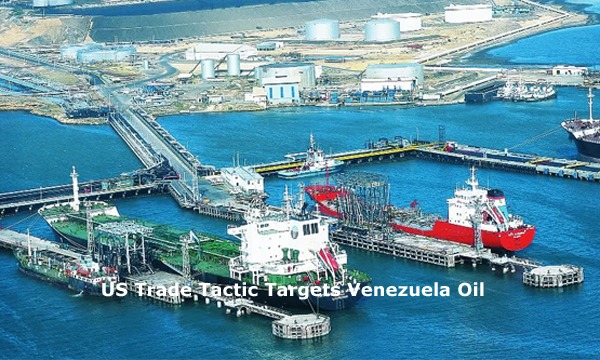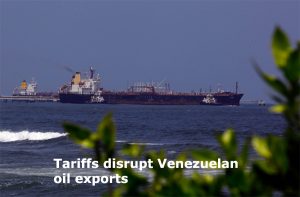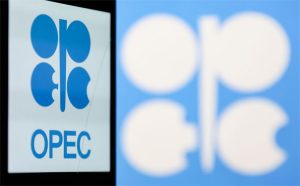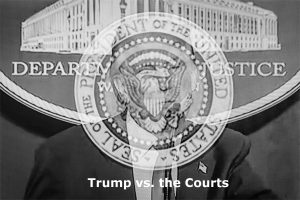Tariffs pile pain across economy of sanctions violators.Analysts say approach must withstand litigation to be effective. Tariffs may make sanctions enforcement easier, some not so sure

Timothy Gardner and Marianna Parraga, Reuters
WASHINGTON=HOUSTON
EnergiesNet.com 03 26 2025
A US plan to slap tariffs on countries buying sanctioned Venezuelan oil marks an unprecedented, and potentially potent, mixture of punitive economic measures against a geopolitical foe that Washington could replicate against other countries like Russia and Iran, analysts said.
The US has maintained sanctions on all three countries for years to hobble their energy revenues, but Washington has tended to enforce sanctions using designations that isolate people or companies that break them from the US financial system.
On Monday night, President Donald Trump broke with that tradition, signing an executive order authorizing his administration to impose blanket 25 per cent tariffs under the 1977 International Emergency Economic Powers Act on imports from any country that buys Venezuelan crude oil and liquid fuels.
Analysts said there are at least two benefits to using tariffs, instead of targeted designations, as the penalty for violating sanctions. Tariffs deliver pain across a country’s entire economy and they are simpler to enact than designations.
“Use of IEEPA to immediately implement broad and sweeping tariffs without any process or procedure remains an unprecedented but potentially extremely powerful weapon in Trump’s trade and foreign policy arsenal,” said Glenn Schwartz, Director of Energy Policy Service at consultancy Rapidan Energy.
“Assuming it withstands litigation, I can see this becoming an attractive option for the Trump administration to exert pressure on US adversaries in addition to traditional sanctions,” said Fernando Ferreira, director of Rapidan’s geopolitical risk service.
“Enforcement could be easier than traditional sanctions, as you only need to monitor country-level dynamics, and we all know where the barrels are going.”
Yet others say enforcement may pose some hurdles. Exporters facing US sanctions have had years of practice masking shipments using a variety of tactics.
In Venezuela, which first faced US energy sanctions in 2019, intermediaries have disguised the country of origin of cargoes bound for China, transferring oil at sea and switching off vessel transponders. Such an approach could complicate enforcement.
Both Venezuela and China slammed the US announcement.
“With this new action, the United States flagrantly violates international trade rules,” Venezuela’s government said in a release on Monday, citing provisions that prohibit discrimination between trading partners.
Washington, “has long abused illegal, unilateral sanctions and so-called long-arm jurisdiction to grossly interfere in the internal affairs of other countries,” said Guo Jiakun, spokesperson at the Chinese foreign ministry, on Tuesday.
The US State Department did not immediately comment.
Fast acting
Trade of Venezuelan oil to top buyer China stalled almost immediately after Trump’s order, according to traders and refiners.
China had been buying around 500,000 barrels per day (bpd) of Venezuelan crude and fuel, or 55 per cent of its exports. Most of that was rebranded as Malaysian after transshipment.
China is also by far the main buyer of Iranian crude oil exports, which Trump has vowed to push down to zero as part of a “maximum pressure” campaign to prevent Tehran from developing a nuclear weapon.
China’s Iranian oil imports averaged about 1.43 million bpd in February, according to data from analytics firm Kpler.
Sara Vakhshouri, founder and president of energy research firm SVB Energy International, said using the threat of additional tariffs on buyers of Iranian oil would again put China in the crosshairs, which may or may not be in US interests.
“In theory, this could be an effective sanctions tool. Under Trump 1.0, Iran’s oil exports dropped to 250,000–300,000 bpd largely because Iran became a factor in Trump’s broader tariff talks with China,” she said.
“In a second term, the situation may differ. Most of Iran’s oil now goes to China, and adding tariffs on China, beyond what has already announced, could fuel inflation in the US.
“However, if Iran again becomes part of tariff negotiations between the US and China, secondary tariffs could effectively pressure Tehran and help the Trump administration to effectively implement sanctions on Iran,” she said.
The US could also consider the approach for Russia, if a ceasefire deal with Ukraine remains elusive, Rapidan’s Ferreira said.
“Trump has already threatened to ratchet up sanctions and tariffs on Russia if they need to pressure Moscow to accept a ceasefire deal,” he said.
“US imports from Russia are pretty small, so the threat didn’t amount to much initially, but it could be effective in the context of secondary tariffs to dissuade importers of Russian energy.”
Additional reporting by Daphne Pseladakis in Washington; Writing by Richard Valdmanis; Editing by David Gregorio
reuters.com 03 25 2025












